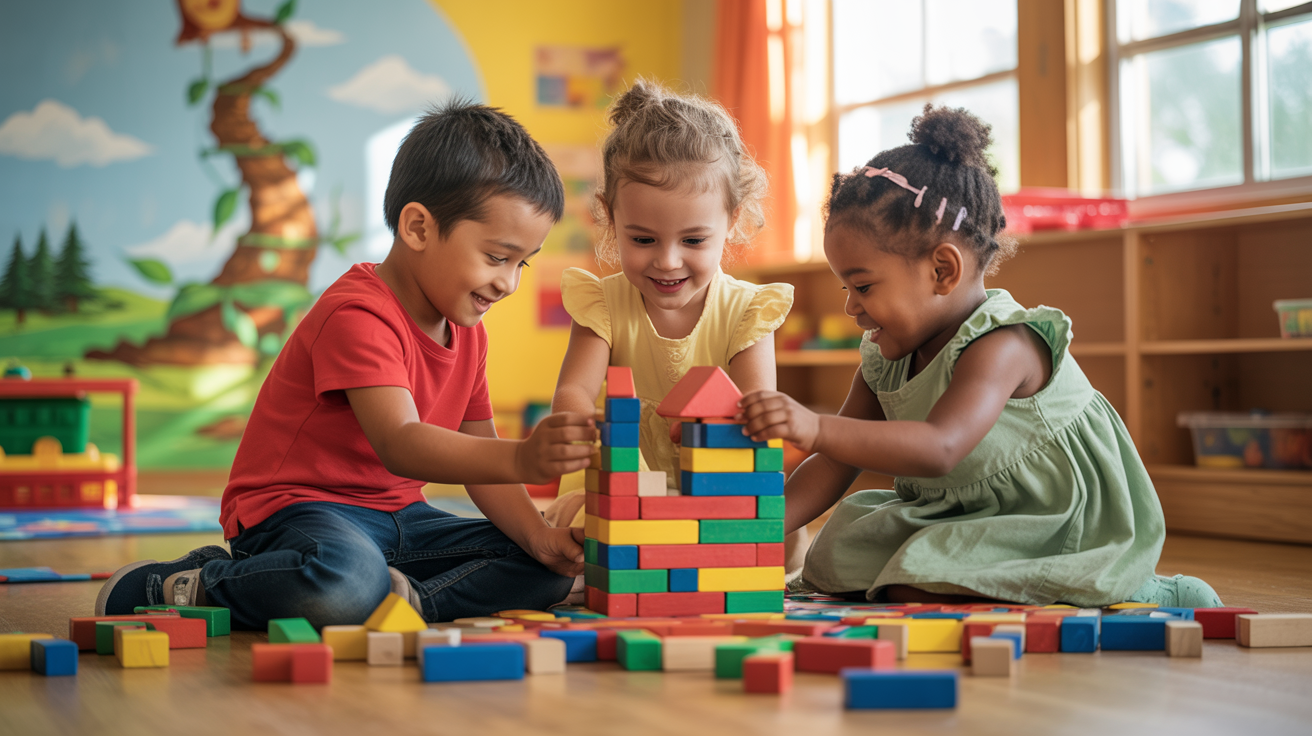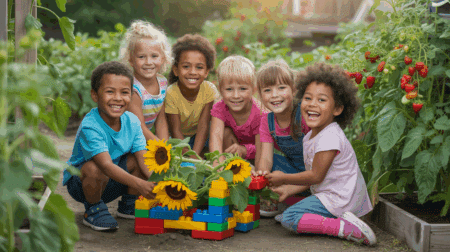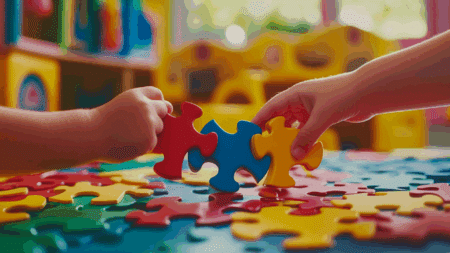Kids love stories. Parents and Teachers know the struggle of keeping little ones busy with fun, meaningful activities. Finding fresh ways to mix learning with play can be tough.
Jack and the Beanstalk offers the perfect mix of magic and wonder for young minds. This classic tale about a boy, some beans, and a giant has charmed kids for many years.
This blog shows you simple and fun learning activities for Jack and the Beanstalk. From growing real beans to making paper giants, these activities will keep kids happy while they learn.
Let’s look at how you can bring this old story to life in your home.
Why Use Jack and the Beanstalk Activities in Learning?
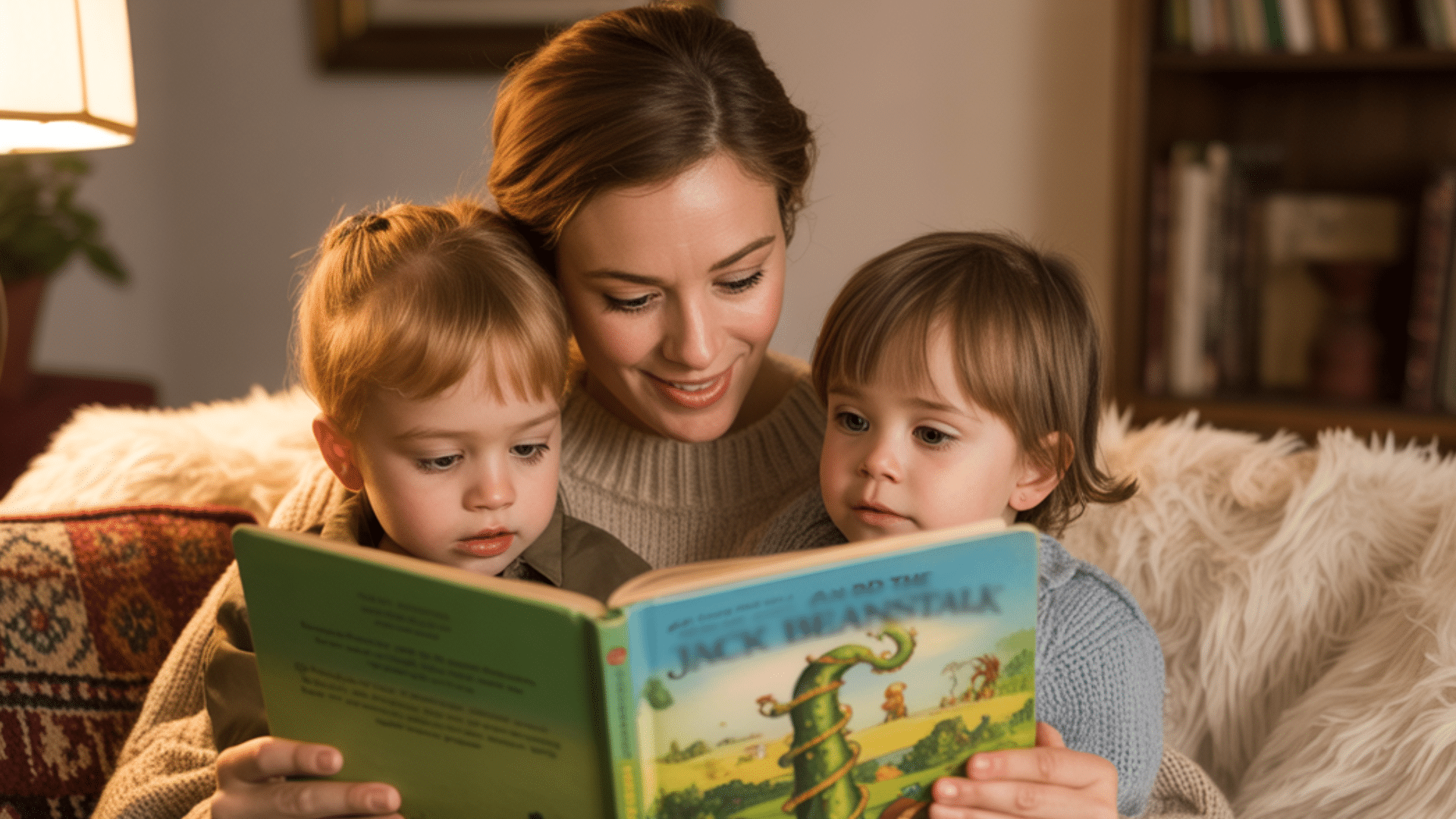
Children naturally connect with the tale of Jack and the Beanstalk. This classic story serves as more than just entertainment.
It becomes a powerful teaching tool when paired with hands-on activities. Using story-based learning with Jack and the Beanstalk helps kids grow in many areas:
- Reading and writing skills improve as children discuss plot points and create their story versions.
- Art skills develop through making bean mosaics, puppets, and story props.
- Science knowledge builds when planting real beans and tracking growth.
- Math concepts take root by counting beans, measuring plant growth, and sorting.
- Fine motor skills get better through cutting, gluing, and manipulating small objects.
The flexibility of Jack and the Beanstalk activities makes them perfect for homes, classrooms, and libraries.
Creative Jack and the Beanstalk Activities for Kids to Try
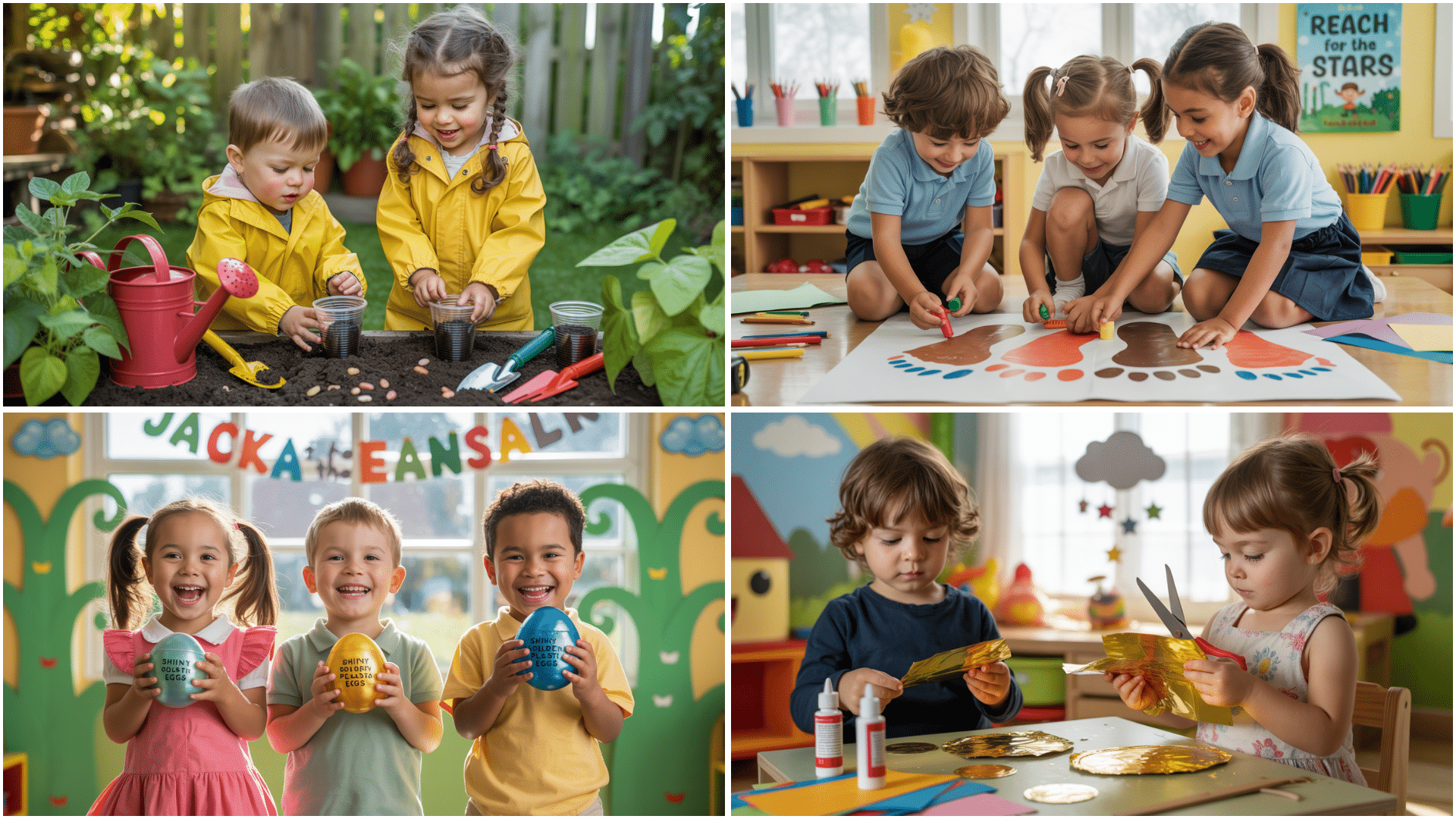
Now that we understand why this story works so well for learning, let’s look at some fun activities.
These simple projects use common items. Kids will enjoy these hands-on ways to bring the story to life while building important skills.
1. Beanstalk Growth Chart
In this activity, children create a growth chart to track how their beanstalk “grows” over time.
Using markers or stickers, they add new leaves and flowers each day to their paper beanstalk, mimicking Jack’s magical plant. This activity encourages observation and creativity while connecting to the idea of growth in the story.
- Materials required: Paper, markers, stickers, ruler
- Best For: Ages 4–8
- Group Size: Solo or small group
2. Jack’s Giant Footprints
This activity studies the concept of scale and size by having children trace giant footprints on large paper.
They can measure the footprints and compare them to their own, learning about relative size. The activity connects to the giant’s enormous steps in the story and encourages math and comparison skills.
- Materials required: Large paper, markers, ruler, tape
- Best For: Ages 5–9
- Group Size: Small group
3. Magic Bean Sorting
In this hands-on math activity, kids sort a variety of beans by size, color, or shape and count them to practice basic math skills.
The magic beans from the story inspire the activity, which helps children develop sorting and counting skills.
- Materials required: Various types of beans, small containers
- Best For: Ages 4–6
- Group Size: Solo or pairs
4. Giant’s Castle Design
Children design a castle for the giant using various craft materials.
The activity involves creating a detailed, imaginative structure while encouraging problem-solving and creativity, just like Jack’s adventure in the giant’s world.
- Materials required: Cardboard, scissors, glue, markers, craft sticks
- Best For: Ages 6–9
- Group Size: Small group
5. Bean Planting Experiment
In this activity, kids plant beans in clear containers to observe how they sprout and grow. It connects to the beanstalk in the story and offers a real-world science experiment.
Children track their bean’s growth and learn about plant life cycles.
- Materials required: Clear plastic cups, soil, beans, water
- Best For: Ages 4–8
- Group Size: Solo or small group
6. Story Sequencing Cards
Children use story sequencing cards to arrange key events from Jack and the Beanstalk in the correct order.
This activity helps develop literacy skills while encouraging children to think critically about story structure.
- Materials required: Printable sequencing cards, scissors
- Best For: Ages 5–8
- Group Size: Pairs or small groups
7. Jack’s Beanstalk STEM Challenge
Kids are challenged to build the tallest “beanstalk” they can using materials like spaghetti, marshmallows, or straws.
This engineering activity allows them to learn the principles of building and testing in a fun, hands-on way.
- Materials required: Spaghetti, marshmallows, or straws
- Best For: Ages 6–9
- Group Size: Small group
8. Beanstalk Math Game
This board game lets kids solve math problems to climb a beanstalk.
Each answer allows them to move forward, making math fun and engaging while reinforcing basic skills like addition and subtraction.
- Materials required: Printable game board, dice, tokens
- Best For: Ages 5–8
- Group Size: 2-4 kids
9. Giant Cloud Art
Using cotton balls and glue, kids create clouds on paper, decorating them with rainbows or a beanstalk climbing up to them. This activity encourages fine motor skills and creativity while exploring the whimsical elements of the story.
- Materials required: Cotton balls, glue, colored paper, markers
- Best For: Ages 4–7
- Group Size: Solo or small group
10. Jack’s Golden Egg Hunt
In this outdoor activity, children search for hidden “golden eggs” in the yard or classroom. It’s a fun, hands-on way to learn the story while practicing observation skills.
- Materials required: Plastic eggs, small treats or prizes
- Best For: Ages 4–8
- Group Size: Small group
11. Write Your Own Jack Story
Kids write and illustrate their version of Jack and the Beanstalk. This activity fosters creativity, storytelling, and writing skills, giving children the opportunity to adapt the classic tale in their own way.
- Materials required: Paper, markers, crayons
- Best For: Ages 5–9
- Group Size: Solo
12. Beanstalk Counting
Children practice counting using bean-shaped counters. By creating simple addition or subtraction problems using beans, children develop early math skills in a tactile and engaging way.
- Materials required: Bean-shaped counters, paper, markers
- Best For: Ages 4–6
- Group Size: Solo or pairs
13. Giant Beanstalk Obstacle Course
This activity involves setting up a physical obstacle course inspired by the trip up the beanstalk. Kids guide through tunnels, climb, and jump, promoting physical activity while engaging in an imaginative play scenario.
- Materials required: Obstacles (cones, tunnels, ropes)
- Best For: Ages 5–9
- Group Size: Small group
14. Beanstalk Collage
Children create a 3D beanstalk collage using paper leaves, flowers, and vines.
This hands-on activity promotes creativity and motor skills while connecting to the theme of growth and nature in the story.
- Materials required: Colored paper, scissors, glue, markers
- Best For: Ages 4–7
- Group Size: Solo or small group
15. Giant’s Voice Sound Game
Children practice reading lines from the story in a “giant” voice, emphasizing expressive reading and fluency. This activity helps kids develop vocal expression and improve their reading skills.
- Materials required: Printable story phrases
- Best For: Ages 5–8
- Group Size: Small group
16. Jack’s Gold Coins Craft
Kids can create their gold coins, decorating them with foil or golden paper.
They can use the coins in imaginative play, enhancing their creativity and motor skills while linking them to the golden treasure in the story.
- Materials required: Gold-colored paper or foil, scissors, glue
- Best For: Ages 5–8
- Group Size: Solo or small group
17. Giant’s Garden Sensory Exploration
In this sensory bin activity, children examine soil, beans, and plastic plants. They engage their senses while learning about the growing process and the importance of gardens in the story.
- Materials required: Soil, small plants, plastic beans, sensory bin
- Best For: Ages 4–7
- Group Size: Small group
Tips to Engage Kids with Jack and the Beanstalk Activities

Getting the most from these story-based activities requires some planning. With the right approach, you can keep kids interested and learning for longer periods.
Here are some tips to make Jack and the Beanstalk activities more effective:
- Mix up learning styles: Include visual activities like drawing the beanstalk, physical tasks like bean planting, and verbal exercises like retelling the story. This helps reach all children, no matter how they learn best.
- Ask open questions: “Was Jack right to take the hen?” or “How might Jack have asked the giant to share?” These talks build critical thinking skills.
- Group by age: For 3-4 year olds, focus on simple bean sorting or puppet play. For 5-7 year olds, try creating story maps or growing bean plants. Older kids might write their giant tales.
- Make it personal: Let kids name their bean plants or create their own magic items, in addition to the usual harp and hen.
- Set clear goals: Know what skills you want to develop, such as counting, storytelling, or science knowledge.
Final Thoughts
Jack and the Beanstalk activities bring learning to life in ways textbooks cannot. The story mixes fun with growth as kids build key skills through play.
You don’t even need fancy materials. Most activities use items you already have at home. Start small with one activity, then try more as you see what the child enjoys.
We’d love to hear how these ideas work in your home or classroom! Which activity did your kids like best?
Did you add your twist to any of these projects? Share your thoughts in the comments below!

